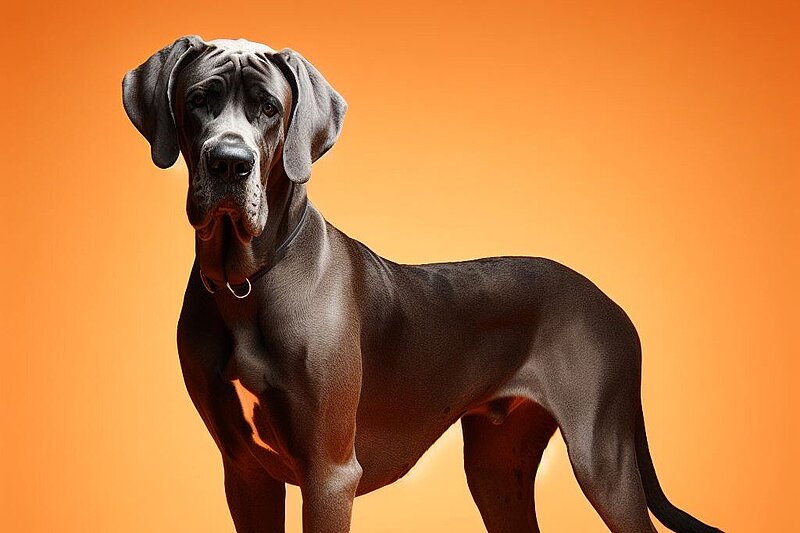Great Dane: The gentle giant among the dog breeds
The history of the Great Dane
The roots of the Great Dane go way back to ancient Egypt, where depictions of large, mastiff-like dogs have been found. In the Middle Ages, these dogs were bred in Germany primarily for hunting wild boar and bear. Over time, these early hunting dogs developed into the elegant and powerful dogs we know today as Great Danes. The breed was officially recognized in 1888 when the Great Dane Club was founded, which still maintains the standards of the breed today.
Who is the Great Dane suitable for?
The Great Dane is ideal for people who have plenty of space and are prepared to offer a large dog a loving home. It is known for its calm and even-tempered nature, which makes it a wonderful family dog. However, you should be aware of its size and space requirements and ensure that you can devote sufficient time and commitment to its care and training.
Character and temperament
Great Danes are known for their friendly and gentle character. They are often very people-oriented and love to spend time with their families. Despite their imposing size, they are generally not aggressive and get along well with children and other animals. Their protective instinct is well developed without them becoming overly territorial.
Appearance of the Great Dane
The Great Dane is one of the largest dog breeds in the world. Males reach a shoulder height of 80 to 90 cm, while females grow to between 72 and 84 cm. Males can weigh up to 90 kg and females up to 59 kg. Their short, dense coat can have different colors, including black, blue, brindle, yellow and spotted (harlequin).
Grooming and health
Grooming a Great Dane is relatively uncomplicated. Their short coat requires regular brushing to remove loose hair and keep the skin healthy. Despite their size, they are surprisingly adaptable and can live in a city apartment as long as they get enough exercise.
Health-wise, Great Danes are prone to certain problems such as hip dysplasia, heart disease and gastric torsion. Regular veterinary check-ups and a balanced diet are crucial to minimize these problems. Due to their size, they have a shorter life expectancy of around 7 to 10 years.
Exercise and training
Great Danes need moderate exercise to stay fit and healthy. Daily walks and outdoor playtime are sufficient to meet their physical and mental needs. When training, it is important to start socialization and obedience training early to ensure they are well behaved and can control their size.
Interactions with children and other animals
Thanks to their gentle nature, Great Danes make excellent companions for families with children. They are patient and protective, which makes them ideal playmates. They also generally get along well with other pets, especially if they are accustomed to them from an early age.
Recognition by the FCI
The Great Dane is recognized by the Fédération Cynologique Internationale (FCI) and belongs to Group 2: Pinschers and Schnauzers - Molossoids - Swiss Mountain and Cattle Dogs and other breeds. This recognition confirms compliance with the breed standards and supports the breeding and preservation of the breed.
